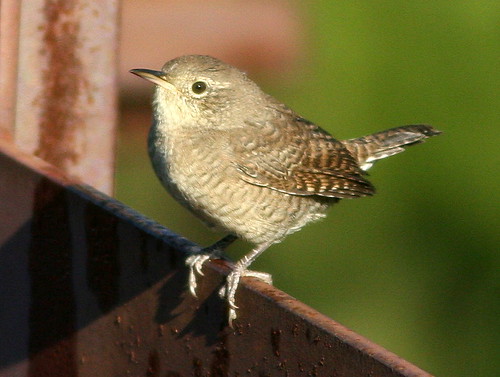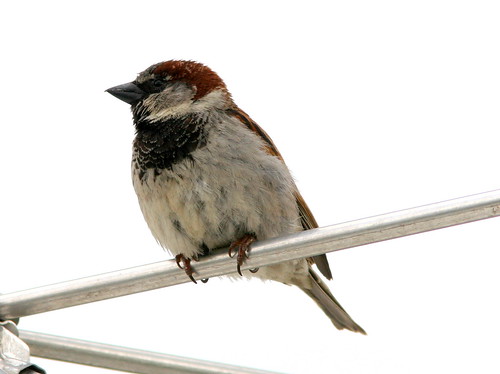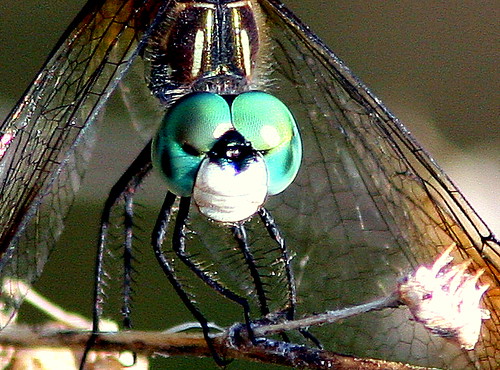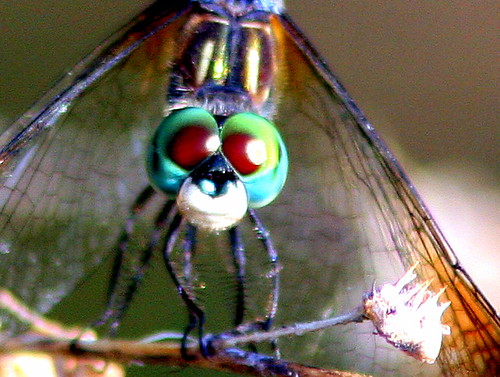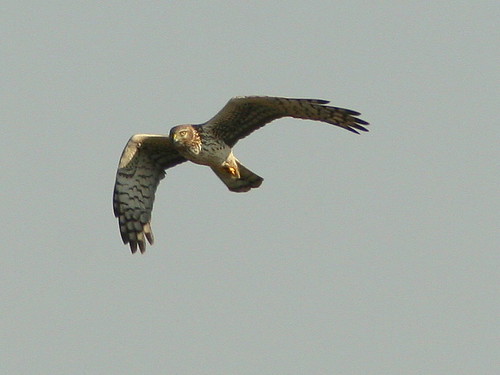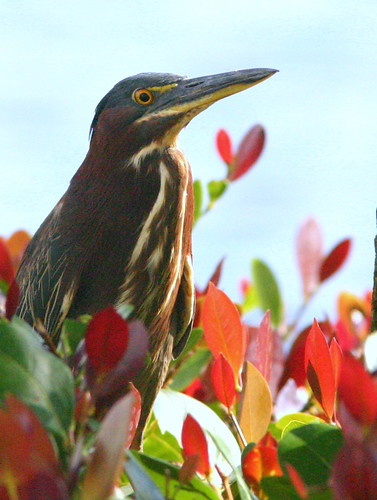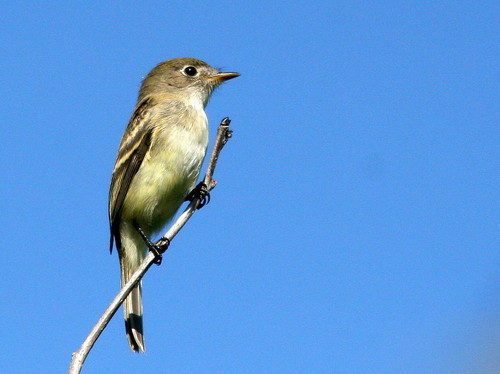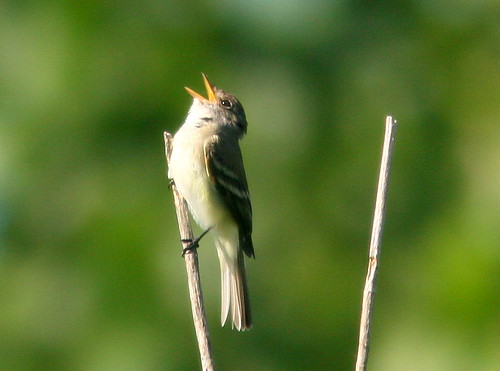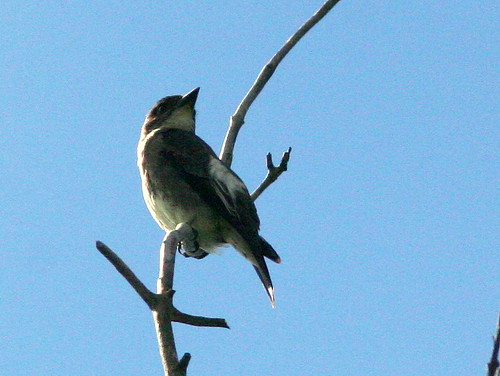Posted by: Ken @ 4:16 pm
Old habits die slowly. As a little tyke I learned from my grandmother, whom I called “Sweetheart,” to call her backyard sparrows “Chippies,” and the wrens in the nest box on her grape trellis, “Jennies.” She made me fear that “darning needles” might sew my mouth closed. Even after learning that the “Jennies” were actually House Wrens and the “Chippies” were English Sparrows I found it hard to adjust to calling them by their new names.
Jennie the House Wren, perched on the observation platform at Nelson Lake:
Chippie the (English -> House) Sparrow:
A feared Darning Needle (Pondhawk species):
Its eyes turn red as it stares at my lips:
Likewise, the first-learned names for Sparrow Hawks and Marsh Hawks remain deeply embedded in my subconscious, and, I admit I still have an impulse to call out their archaic names in my native tongue rather than using the AOU “second language” for kestrels and harriers.
Sparrow Hawk (American Kestrel) in our Illinois front yard: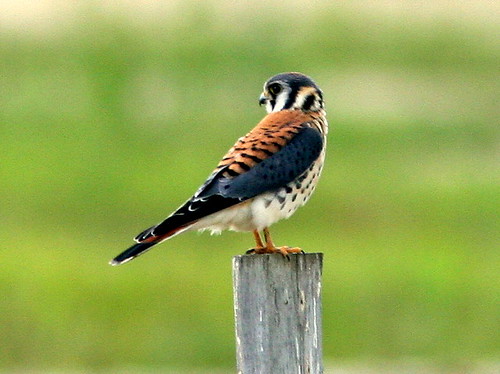
Marsh Hawk (Northern Harrier) near our Florida home:
Rock Doves have always been just “pigeons” to me (my first bird book called them “Domestic Pigeons) and thankfully, the professionals eventually gave them back their old labels, as they did for Baltimore Orioles, Wilson’s Snipes and Green Herons.
Backyard Pigeon (Rock Dove -> Rock Pigeon):
Baltimore Oriole at Nelson Lake in June (Baltimore Oriole -> Northern Oriole -> Baltimore Oriole):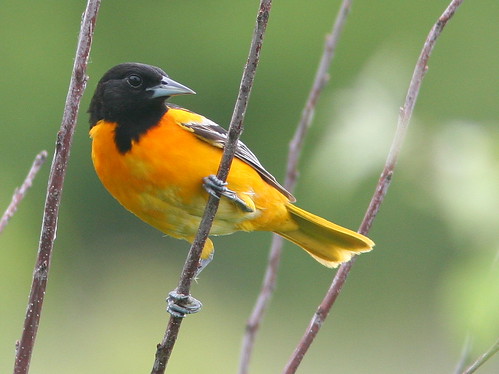
Green Heron (Green Heron -> Green-backed Heron -> Green Heron) in our Florida backyard Cocoplum:
Psychologists say that childhood memories of smells and sounds are retained more tenaciously than visual images. Even now I vividly recall the scent of Garter Snakes as they emerged from hibernation and entwined into globular masses as they mated. Likewise, the delicious sweet perfume of Citronella Ants lingers in the memory bank, reminding me of the time I tasted one of them, only to find it disappointingly acrid.
So it is with the songs of the birds of my childhood, starting with Jennie’s rollicking trill, the cheery warbles of robins and the clear whistles of cardinals. I instinctively used the accepted onomatopoeic names for the chickadee, Whip-poor-will and bobwhite. By the same logic, the Red-eyed (later Eastern) Towhee stayed a “Chewink,” and the Maryland (later Common) Yellowthroat remained a “Witchity” as splitters and lumpers argued over the fine points of their taxonomy.
Chewink (Red-eyed Towhee -> Rufous-sided Towhee -> Eastern Towhee); note that the South Florida race has yellow, not red, eyes: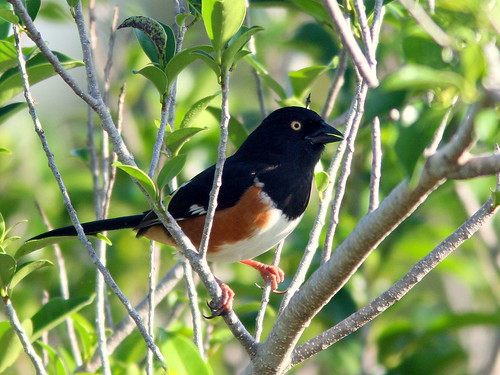
Witchity (Maryland Yellowthroat -> Northern Yellowthroat -> Common Yellowthroat):
So it is with flycatchers: the Eastern Phoebe and the wood-pewees named themselves, but why didn’t they call the Great Crested Flycatcher a “Wheep?”
Great Crested Flycatcher in mid-Wheep: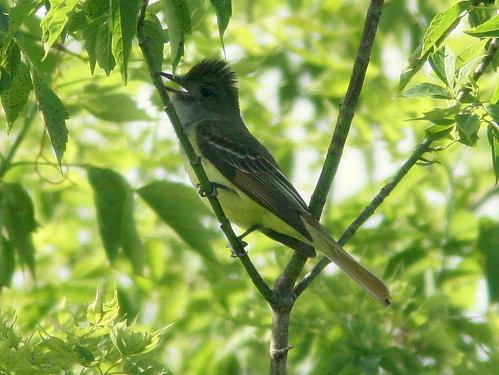
For some flycatchers in the Empidonax genus, their most distinctive characteristic is often voice– all look quite similar but are separable by calls and songs, such as “Cheb-ik” and “Fitz-byew.”
Cheb-ik (Least Flycatcher):
A hearty “Fitz-byew” from this Willow Flycatcher:
Of course, when in the company of experienced birders, I have learned to suppress the urge to blurt out the name of a bird in my “native” language, yet the old label often pops up first into consciousness, and there is a momentary pause as the synapses of my brain re-route the circuits on their way to my tongue.
This past weekend, I birded the 3 mile path around Nelson Lake with the Kane County (Illinois) Audubon Society. As often happens, I gradually dropped behind the leader with a subgroup that had gathered around a birder who was also expert at identifying local plants. I found it very interesting when she showed us the differences between Indian Grass and Little Bluestem, and… oh, I’ve already forgotten the names of the other interesting trees, flowers, berries and herbs she pointed out!
Prairie Milkweed was host to a colony of (what else?) Milkweed Bugs, that drink the poisonous sap and conspicuously signal the danger to any predator that might dare to make a meal of them:
Our leader was far out of earshot when I spotted a flycatcher high in the branches of a dead tree. It occasionally made forays to capture flying insects, but usually returned to the same perch. This habit, and the fact that the bird exhibited a dark “vest” on both sides of its chest, stimulated a long dormant cell in my reptile brain. It fired random electrical impulses, aimed in the general direction of my cerebral cortex. Unfortunately, the proper name of the bird was stored somewhere deep in the gray matter, and I could only utter a reflex “Quick Three Beers!.”
Quick Three Beers (Olive-sided Flycatcher):
It has been several years since I last saw an Olive-sided– It was like seeing an old friend. The whitish back patch is not always visible:
I find solace in the fact that this kind of thing has happened to everyone at least once in their life. Be honest. How about that neighbor who lived three doors down your street whose dog pooped on your lawn, twenty years ago? I know you remember his face and even the breed of his dog, but can you really remember his name?













